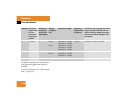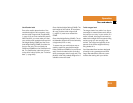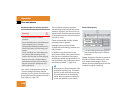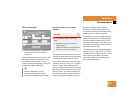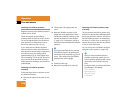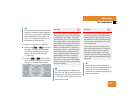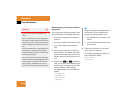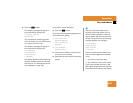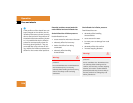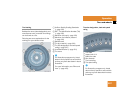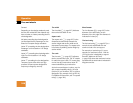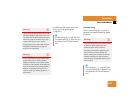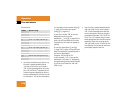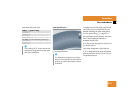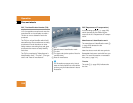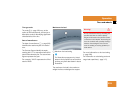
326
Operation
Tires and wheels
Potential problems associated with
underinflated and overinflated tires
Underinflated tire inflation pressure
Underinflated tires can:
ț cause excessive and uneven tire wear
ț adversely affect fuel economy
ț lead to tire failure from being
overheated
ț adversely affect handling
characteristics
Overinflated tire inflation pressure
Overinflated tires can:
ț adversely affect handling
characteristics
ț cause uneven tire wear
ț be more prone to damage from road
hazards
ț adversely affect ride comfort
ț increase stopping distance
i
If the positions of the wheels have not
been changed on the vehicle, the tire
inflation pressures are shown correctly
after a short period. If the positions of
the wheels have been switched, howev-
er, it is possible that the tire inflation
pressures are temporarily shown for
the wrong wheel positions. They are
corrected after a few minutes of driv-
ing, and the tire inflation pressures are
shown for the correct wheel positions.
Warning! G
Follow recommended tire inflation
pressures.
Do not underinflate tires. Underinflated tires
wear excessively and/or unevenly,
adversely affect handling and fuel economy,
and are more likely to fail from being
overheated.
Warning! G
Follow recommended tire inflation
pressures.
Do not overinflate tires. Overinflated tires
can adversely affect handling and ride
comfort, wear unevenly, increase stopping
distance, and result in sudden deflation
(blowout) because they are more likely to
become punctured or damaged by road
debris, potholes etc.



